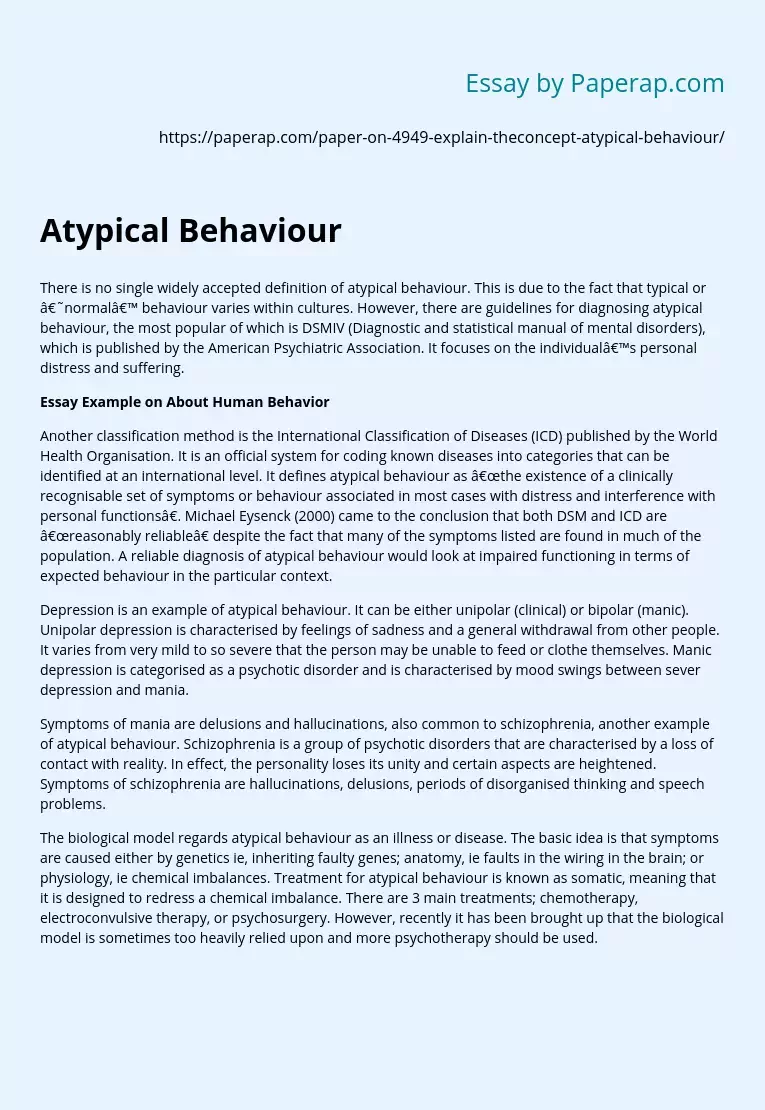Atypical Behaviour
There is no single widely accepted definition of atypical behaviour. This is due to the fact that typical or ‘normal’ behaviour varies within cultures. However, there are guidelines for diagnosing atypical behaviour, the most popular of which is DSMIV (Diagnostic and statistical manual of mental disorders), which is published by the American Psychiatric Association. It focuses on the individual’s personal distress and suffering.
Essay Example on About Human Behavior
Another classification method is the International Classification of Diseases (ICD) published by the World Health Organisation.
It is an official system for coding known diseases into categories that can be identified at an international level. It defines atypical behaviour as “the existence of a clinically recognisable set of symptoms or behaviour associated in most cases with distress and interference with personal functions”. Michael Eysenck (2000) came to the conclusion that both DSM and ICD are “reasonably reliable” despite the fact that many of the symptoms listed are found in much of the population.
A reliable diagnosis of atypical behaviour would look at impaired functioning in terms of expected behaviour in the particular context.
Depression is an example of atypical behaviour. It can be either unipolar (clinical) or bipolar (manic). Unipolar depression is characterised by feelings of sadness and a general withdrawal from other people. It varies from very mild to so severe that the person may be unable to feed or clothe themselves. Manic depression is categorised as a psychotic disorder and is characterised by mood swings between sever depression and mania.
Symptoms of mania are delusions and hallucinations, also common to schizophrenia, another example of atypical behaviour. Schizophrenia is a group of psychotic disorders that are characterised by a loss of contact with reality. In effect, the personality loses its unity and certain aspects are heightened. Symptoms of schizophrenia are hallucinations, delusions, periods of disorganised thinking and speech problems.
The biological model regards atypical behaviour as an illness or disease. The basic idea is that symptoms are caused either by genetics ie, inheriting faulty genes; anatomy, ie faults in the wiring in the brain; or physiology, ie chemical imbalances. Treatment for atypical behaviour is known as somatic, meaning that it is designed to redress a chemical imbalance. There are 3 main treatments; chemotherapy, electroconvulsive therapy, or psychosurgery. However, recently it has been brought up that the biological model is sometimes too heavily relied upon and more psychotherapy should be used.
Atypical Behaviour. (2019, Nov 27). Retrieved from https://paperap.com/paper-on-4949-explain-theconcept-atypical-behaviour/

